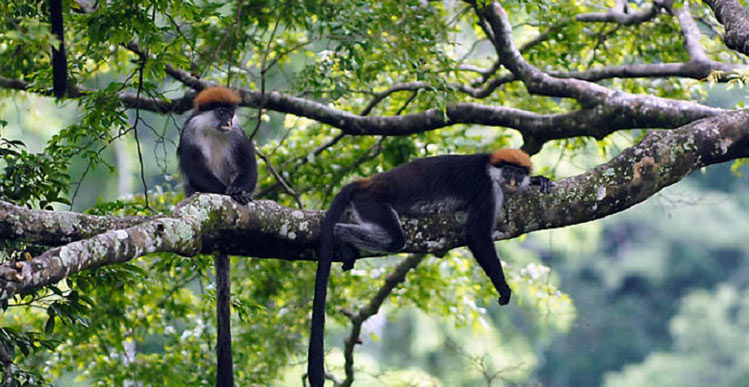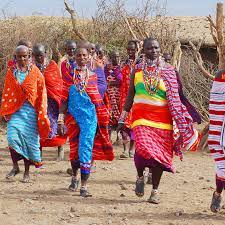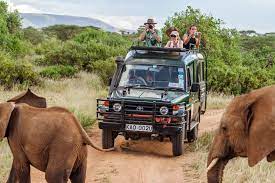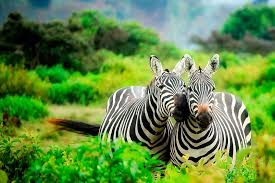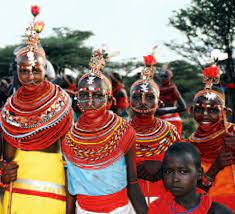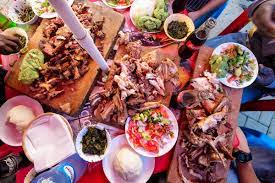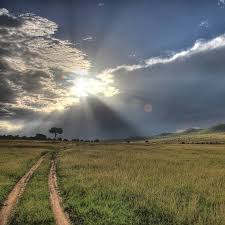Overview
Udzungwa Mountains National Park is a national park in Tanzania with a size of 1,990 km2 (770 miles2).[2] The habitats contained within the national park include tropical rainforest, mountain forest, miombo woodland, grassland and steppe. There is a vertical height range of 250–2,576 metres (the peak of Lohomero), which incorporates the Udzungwa Mountains part of the Eastern Arc Mountains. There are more than 400 bird species, 2500 plant species (25% of which are endemics) and 6 primate species. It has the second largest biodiversity of a national park in Africa.
Six primate species have been recorded, five of which are endemic. The Iringa red colobus and Sanje crested mangabey are only found in the Udzungwa Mountains National Park, the mangabey species was undetected by biologists prior to 1979. Tourism in the Udzungwa Mountains national Park revolves around hiking and trekking, as the park has no roads and is accessible only on foot. The hiking trails range in difficulty from the short one-hour Sonjo trek to the extremely challenging 6-day camping trek the Lumemo Trail. The most common walk is the Sanje Waterfalls trail which takes approximately four hours to complete and allows the visitor access to the stunning 170 m waterfall and includes swimming in the waterfall plunge pools as part of the activity. Accommodation for visitors within the park is only possible on a camping basis as there are no lodges within the park borders. Within the nearby village of Mang’ula there are also a couple of local guesthouse
Best Time to Visit
In addition to the AfricanMecca Safaris Tier rating, you should also consider the time of year that you plan your Udzungwa Mountains National Park safari, as weather patterns also influence the experience you will have during your visit. No matter what time of year you visit, though, you are sure to be enthralled with the biodiversity, lush green landscape and ancient cultures of the area . The year-round temperature at the national park is pleasant, with the higher temperatures occurring around October to March and the coolest temperatures occurring around May to July. Depending on the month of travel, the average high temperature range from 77-86 F (25-30 C), but at times, it has also peaked close to 95 F (35 C) during the humid, short rain season. The average low temperature of about 69-74 F (17-23 C), but the temperatures have previously dropped to about 55 F (12 C). Like other locations in Tanzania, Udzungwa Mountains Park has a rainy season and dry seasons. Most of the long rainfall occurs from March to May and the precipitation can make the roads and trails quite slippery. During the rainy season is also when you may see some of the many delightful butterflies that thrive within the park. Because of the effects of heavy rainfall on the woodland and highlands terrain, your activities may be impacted, though, it is recommended to plan any AfricanMecca wilderness vacation to Tanzania’s National Park during the dry season, which runs from the cooler June to the warmer October, and we consider this time of year to be the best. When you pack for your , be sure to bring a variety of clothing to ensure your comfort during the day and in the evenings. You should bring a light jacket or sweater, comfortable shoes and hiking boots and rain gear, especially if you will be visiting during the rainy season. Also bring a hat to protect your eyes and face from the sun, as well as sunscreen, and don’t forget your swimming suit should you choose to swim in a lovely natural plunge pool of refreshing water underneath the Sanje waterfalls.
Getting There
By Car
To drive from Dar es Salaam, take the Morogoro road and continue for around 4 hours through Chalinze, Morogoro and Mikumi National Park to Mikumi town. In Mikumi town, take a left turn following the signs for Ifakara and Udzungwa Mountains National Park. You pass through the town of Kilombero and cross the mighty Ruaha River to Kidatu, with its hydroelectric power station and Ilovo headquarters. Here the tarmac road ends, and you continue along on a graded dirt road for 24km. Look out for Sanje waterfall on your right when you pass through Sanje Village. You will see the sign for the National Park on your right once you reach the village of Mang’ula. OR Drive through Selous Game Resevre. This route is newly completed by TANAPA and allows a circuit to be driven from Dar to Selous, on to Udzungwa, then up to Mikumi and back to Dar (or the other way around). Great for a southern self drive safari route!
By Train
The TAZARA railway from Dar es Salaam to Zambia departs on Tuesdays and Fridays at approximately 2pm. The journey to Mang’ula where the park headquarters is takes 6-7 hours. The train is a great way to reach the park: it is comfortable and cheap, with food, drinks, cold beers all available. It passes through some wonderful countryside including [Selous Game Reserve] where you might see some wildlife. It is good to have patience as the train is not always reliable and can be delayed. The train returns from Zambia to Dar es Salaam, passing through Mang’ula on Thursdays and Sundays. The distance from Zambia is huge so there can be major delays.
By Flight
Coastal operate daily flights to/from Udzungwa/Kilombero to Dar es Salaam and Zanzibar. This flight runs every afternoon and links Udzungwa to the rest of the safari circuit. It is also possible to fly to Mikumi airport using Safari Airlink and drive down the valley to Udzungwa.
Activities
Hiking
Udzungwa Forest Lodge’s main attraction is Udzungwa Mountains National Park, which is well known for excellent hiking, trekking, mountain climbing and forest walks. With no road access and the only way in being on foot along one of the many trails, the mountains keep their secrets from all but the most adventurous. Once you’ve gained a little altitude, the forest canopy shields you from the heat of the sun and you can enjoy the forest along with the monkeys, elephants, birds, duikers and elephant shrews. Hiking in the Park (½ day, full day or several days) Habituated Mangeby (monkeys) hike
Local Activities
A popular activity from Hondo Hondo is cycling. Come with your own bike, or rent one. We have a selection of bike sizes for all ages. Unfortunately there are no cycling trails within the National Park itself (and if there were, they’d be a “black run”), but the valley provides plenty of great cycling terrain full of things to see. You can combine cycling with other activities such as village tour, rubber plantation and Magombera Monkey Forest and it is possible to go with one of our guides to explore the local rural villages, and this provides a great opportunity for photography and interaction with rural Tanzanian life. Cycling (per hour, ½ day or full day) Mang’ula Village Tour (2h, on foot or cycle) Rubber Plantation visit (half day – by car or cycle) Magombera Monkey Forest – (½ day – by car or cycle)
Day trips
The main town in the district is Ifakara – about 50km to the south west further up the valley. It is a long ribbon town spreading for a couple of kilometres along the road. The town has a wild west kind of feel, with wooden two story buildings and cow drawn carts sharing the bustling high street with the cars and bicycles. The large market is full of produce and unusually, you’ll have very little hassle from traders, unlike most African markets – Ifakara has virtually no tourists and hasn’t been spoilt by tourists paying over the odds for goods. You can find second hand designer clothes here for just a couple of dollars or a large variety of natural medicines and potions for every ailment. A trip to Ifakara also includes a visit to the Ifakara Womens Weavers Association where you can see the looms in action and buy some of the locally made kikoi. You can also visit the Kilombero River where you can watch the bird life along the river bank, and there are some great photographic opportunities. Dugout Canoeing on the Kilombero River (half or full day) Mikumi National Park Game Drive (Full day) Ifakara Town Visit (half or full day)
Overnight Adventure / Flycamping
Canoe down the Kilombero River, in a shaded canoe bird/croc/hippo watching and experience the true pleasure of remoteness. Situated on the banks of the Kilombero River, 4 hours from the Ifakara you’re really “out there”, with the spectacular Kilombero sunset on the decking over the river, dining in style. Return by car, or cycle back to the with vehicle escort before driving back to Hondo Hondo. Kilombero River staying at Mikeregembe fishing village on the edge of Selous. Mikumi National Park (1 or 2 nights ) Kilombero Itete Mission (overnight)
Uniqueness
The biodiversity of this park is by far one of Tanzania’s most special features. Habitats include mountain forests, tropical rainforests, Miombo woodlands, grasslands and steppe. The Udzungwa Mountains are part of the Eastern Arc Mountains which are found in Kenya and Tanzania and were formed some 200 million years ago. Today they hold a unique collection of flora and fauna and cover only 2% of Tanzania’s area but hold between 30-40% of the countries plant and mammal species. The vertical height of the Udzungwa forests ranges from 250 m to 2,576 m and with numerous forest trails, offering different kinds of activities, the park is a true hikers paradise. A half day tour to Sanje waterfall at a towering 170 m is definitely worth doing.
The park is also home to 6 species of primates, 2 of which (Iringa red colobus and the Sanje crested Mangabey) occur nowhere else in the world. Mammals found in the park include elephants, leopards, bush bucks, duikers, palm civets, Miombo genets, elephant shrews and hyenas. Bird watchers are also in for a treat as the park boasts with over 400 species of birds. Some of them are endemic to the Eastern Arc Mountains and four of them are found only in Udzungwa. Other common birds include ruppells vultures, marabous, crowned eagles, malachite kingfishers, woodland kingfishers, silvery cheeked hornbills and trumpeter hornbills. Over 2500 species of plants have been discovered in the park of which 25% are endemic to the area. Research is still ongoing and as this park is so secretive it isn’t yet known what else can be found here. Recently a new species of snakes was found in the park and it is claimed to be endemic.

